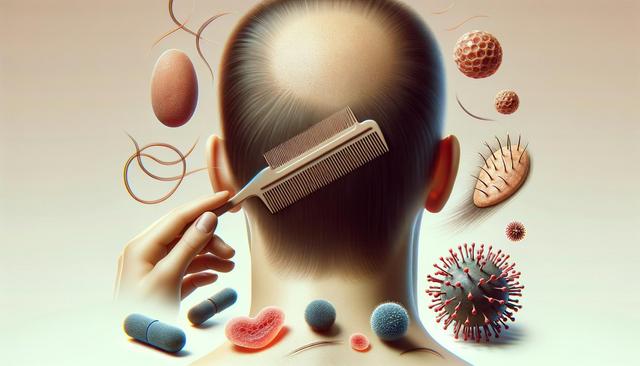How Hair Grows: The Basics You Should Know
Before diving into the world of hair growth products, it’s important to understand how hair grows. Hair growth occurs in three main stages: anagen (growth), catagen (transition), and telogen (rest). The anagen phase can last several years and determines the length of your hair. When this cycle is disrupted by factors such as stress, poor nutrition, or hormonal imbalances, hair thinning or loss can occur.
Hair follicles are influenced by both internal and external factors. Genetics play a major role, but lifestyle choices, scalp health, and even environmental exposure can affect hair growth. Knowing this helps consumers select products that align with their unique hair needs rather than seeking one-size-fits-all solutions.
Understanding the hair growth cycle allows individuals to set realistic expectations. Many products require consistent use over several months to show visible results, especially since hair grows at an average of about half an inch per month.
Types of Hair Growth Products on the Market
Hair growth products come in various forms, each targeting different aspects of the hair growth process. Common categories include topical treatments, supplements, shampoos, and conditioners. These products are often formulated with ingredients aimed at stimulating follicles, improving scalp circulation, and nourishing the hair shaft.
Popular types of hair growth products include:
- Topical serums and foams containing natural extracts and vitamins
- Oral supplements with biotin, zinc, and other nutrients
- Specialized shampoos and conditioners targeting thinning hair
- Essential oils like rosemary or peppermint believed to support scalp health
Each product type offers different benefits depending on the underlying cause of hair loss. For example, if the issue is nutritional deficiency, a supplement might be more appropriate. If buildup and poor scalp hygiene are contributing factors, a clarifying shampoo may help restore balance.
Ingredients That May Support Hair Growth
Not all ingredients are created equal when it comes to hair growth support. Some have been more widely studied for their potential in promoting healthier hair. While scientific consensus varies, certain compounds are commonly found in hair care products due to their supportive properties.
Examples of commonly used ingredients include:
- Biotin, a B-vitamin known to support keratin production
- Niacin, which helps improve blood flow to the scalp
- Castor oil, rich in ricinoleic acid that may support follicle health
- Saw palmetto, often included in products targeting hormonal hair loss
- Caffeine, believed to stimulate hair follicles when applied topically
These ingredients are usually combined with other hydrating and nourishing elements like aloe vera, coconut oil, or keratin proteins. Choosing a product with a proven ingredient list can make a meaningful difference when used consistently and as directed.
Choosing the Right Product for Your Needs
Selecting the right hair growth product requires understanding your specific hair condition. Factors such as age, gender, hair type, and the cause of hair loss all play a role. Consulting a healthcare or dermatology professional can help identify the root cause and guide product selection.
Here are a few considerations when choosing a product:
- Look for transparency in ingredient labeling
- Check for third-party testing or dermatological recommendations
- Read reviews and experiences from users with similar hair concerns
- Be wary of exaggerated claims or miracle promises
A product that works well for one person may not yield the same results for another. Trial and error, along with patience, are often part of the process. It’s also helpful to track changes over time through photos or notes to monitor progress objectively.
Maintaining Hair Health Alongside Product Use
While hair growth products can be a valuable part of a hair care routine, they work best when combined with healthy habits. Nutrition, stress management, and gentle hair care practices all contribute to long-term success. A balanced diet rich in vitamins and proteins provides the foundation for healthy follicles.
Additional tips for supporting hair health include:
- Avoiding excessive heat styling and chemical treatments
- Using a silk or satin pillowcase to reduce hair breakage
- Keeping the scalp clean and moisturized
- Regular scalp massages to improve blood flow
Consistency is key. Many users give up on hair growth products too soon, expecting rapid results. However, maintaining a supportive hair care routine and giving products enough time to show results can significantly improve outcomes over the long term.
Conclusion: Building a Thoughtful Hair Growth Journey
Hair growth products can be a helpful tool for individuals experiencing thinning or slow-growing hair, but they are not a quick fix. By understanding how hair grows, selecting the appropriate products, and supporting usage with healthy habits, users can improve their chances of seeing meaningful changes. Patience, consistency, and a holistic approach are essential for making the most of any hair growth regimen.


